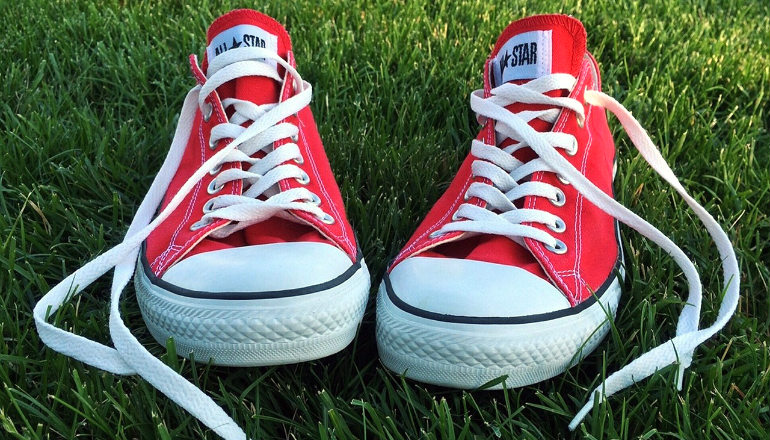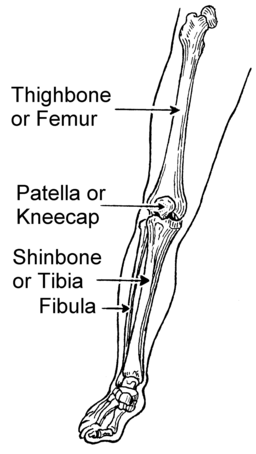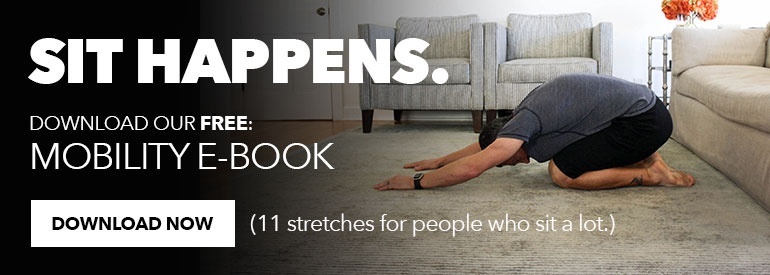 Reading Time: 5 minutes
Reading Time: 5 minutesAs a follow-up to my article on how to correct a duck footed stance (one where your feet turn outward while walking or standing), I was asked to address the issue of being pigeon toed. Pigeon toeing is the exact opposite of duck feet. Instead of your feet being turned outward, they are turned inward.
In this piece I’m going to lay out what pigeon toeing is and how it happens. We’ll also talk about its prevalence in children and how adults who have it can address it to varying degrees.
The Options to Treat Pigeon Toeing in Children
 Pigeon toeing is often seen in young children. It is usually caused by the inward rotation of the femur in the hip, the tibia in the lower leg, or the metatarsal bones of the foot. Coincidentally, the same causes of duck feet are also associated with pigeon toeing. In the case of duck feet, the bones are externally rotated beyond a normal position, while in pigeon toeing the bones of the legs are internally rotated beyond a normal position.
Pigeon toeing is often seen in young children. It is usually caused by the inward rotation of the femur in the hip, the tibia in the lower leg, or the metatarsal bones of the foot. Coincidentally, the same causes of duck feet are also associated with pigeon toeing. In the case of duck feet, the bones are externally rotated beyond a normal position, while in pigeon toeing the bones of the legs are internally rotated beyond a normal position.
While pigeon toeing is potentially common in young children, it is something they normally grow out of as they get older. The bones, muscles, and connective tissues slowly change position and realign with time. In severe cases where this change doesn’t naturally occur, there are a few options for correction:
- Young children with the inward rotation originating in the feet are often prescribed shoes or braces to correct the issue and encourage a more natural foot position.
- If the source of rotation is the hips or lower legs, then the situation is usually left alone to correct itself.
- In a case where things don’t realign naturally, the only option tends to be surgery.
Whatever the case, I always recommend doing your research and consulting with appropriate medical professionals, which in this case would include a podiatrist. Sometimes surgery is the only option, but once something in your body has been cut, it will never be as strong as it was when it naturally formed. Given that, the option of surgery should be approached with diligence and care.
What if I’m an Adult Who Is Pigeon Toed?
While most children grow out of a pigeon toed stance, there are some who do not. This is often attributable to a fixed part of a person’s anatomy, such as a pelvic structure that predisposes a person to being permanently pigeon toed. In cases such as this, the only option is surgery that is normally done while the person is relatively young. Those whose pigeon toeing isn’t addressed at this age will wind up walking with this stance into adulthood.
If this is you, then the unfortunate truth is that there’s no amount of mobility work that can compete against your bone structure. It is the framework your body is built upon, and therefore the muscles and connective tissue must conform to it. This is where a consultation with a podiatrist and/or physical therapist can be helpful in leading you to your next step.
But this might not include you. A small percentage of adults may not need surgery, and for these people mobility may be a viable option. These adults may not be pigeon toed in the classic sense. Meaning, their inward rotation may not be as dramatic as someone whose pigeon toeing is due to their anatomy. And it may only present itself when the person is trying to squat or move in such a way that the lack of external rotation begins to display itself.
For these people, the first and most likely place to begin addressing pigeon toeing is with the hips. Excessive internal rotation at the hips can be resolved with mobility exercises that address the tissues around the hip capsule and femur itself.
How to Improve Hip External Rotation
In this video, you’ll notice I’m biasing the leg into an externally rotated position. This is to help establish the position I want to improve. I can moderate the intensity so I’m uncomfortable, which indicates I’m properly working the tissues, but not in excruciating pain, which means I’m most likely doing significant damage to the tissues I’m trying to improve.
How to Improve Tibia/Fibula Rotation
The muscles and connective tissues around the tibia don’t get much attention and consequently can be difficult to get working in proper fashion again. That doesn’t mean it’s not doable, it just means you’ll have to exercise patience and focus in the long term. (As you’ll have to do with any mobility work that’s aimed at correcting an imbalance.)
This video is one I originally made for my duck feet article. In it, I take you through a technique you can use to aide in loosening the tissues surrounding the lower leg. This one might also have a positive effect on the ankle and knee tissues. By moving the foot and ankle through different positions and ranges of motion, you can gradually restore the rotation in the tibia and fibula, the bones of the lower leg. As their ability to rotate increases and the muscles around them become more mobile, they’ll be better able to maintain a normal position.
How to Improve Foot Mobility
Pigeon toeing that originates in the feet is sometimes due to weak musculature. For those with weak arches, standing with the feet rotated inward can help ease the discomfort of standing, walking, or running.
For those whose pigeon toeing isn’t a result of something they were born with, the tissues of the feet can be worked to loosen them. This video for how to work on improving plantar fasciitis applies because pigeon toeing originating with the feet can lead to similar restriction of the foot muscles.
I also highly recommend the inclusion of balance work to help improve foot mobility. Loosening the tissues isn’t enough, you also have to get them strong and help the nerves begin firing properly.
Note: if your pigeon toeing is the result of a curvature of the feet that originates with your bone structure, then a consult with an experienced medical professional is the first step you should take as it’s unlikely that mobility work will be able to correct your foot position.
See What You Can Do with Consistent Effort
Taken individually or all together, these exercises are a great place to start improving a lack of external rotation in your legs. If after a significant period of consistent effort, you find there doesn’t seem to be improvement, then the next step should be to seek the counsel of a doctor or physical therapist who can give you advice as to your next course of action.





